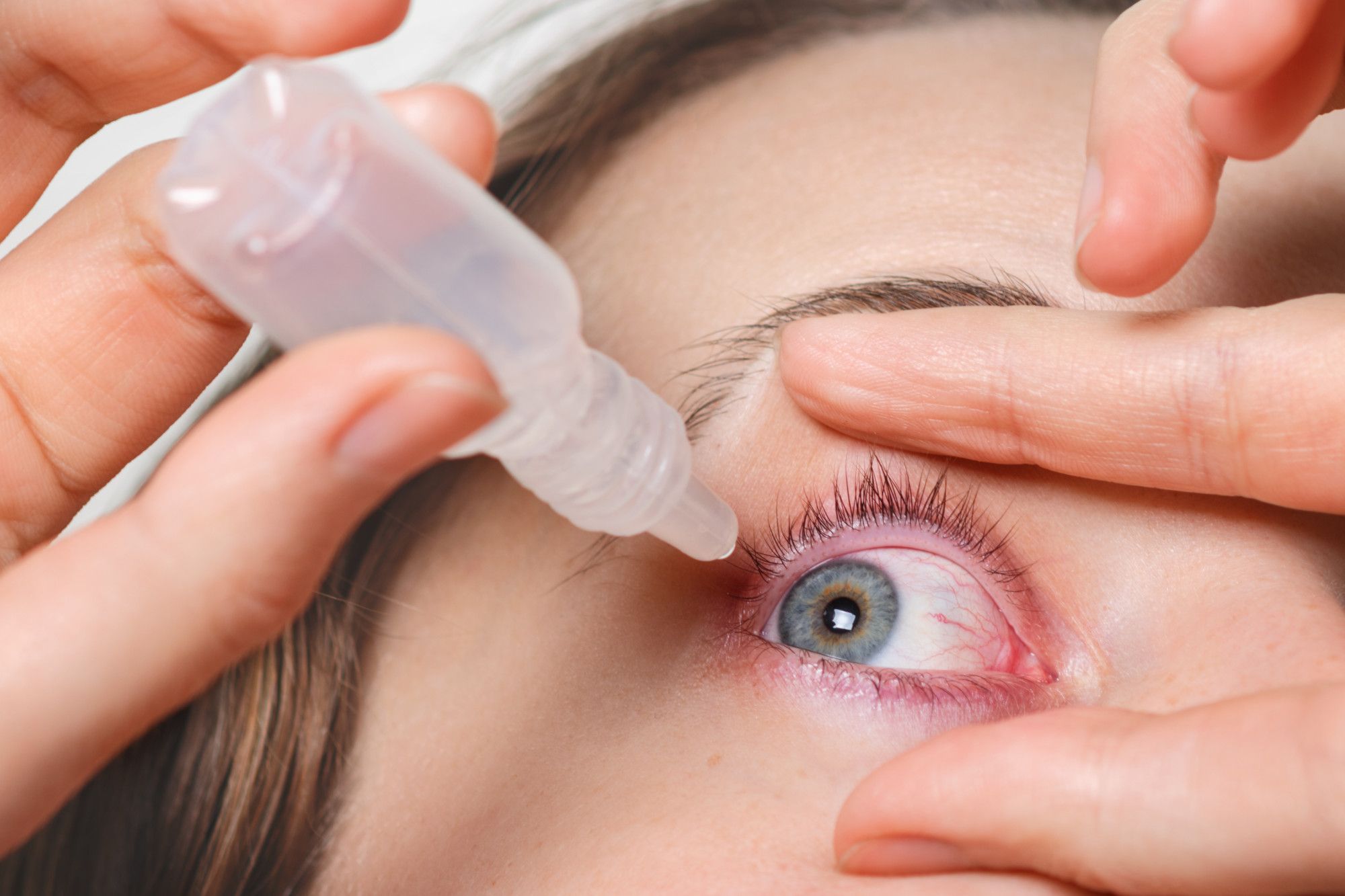Health
Dry Eye Blepharitis Syndrome (DEBS): Blepharitis, Biofilm, and Dry Eye Syndrome
Published
8 months agoon

Due to changes in lifestyle, prolonged exposure to computers, smartphones, tablets, and other electronic devices, reduced blink frequency leads to decreased meibum secretion from the meibomian glands, resulting in reduced tears. The diminished tear production and lowered antibacterial capabilities in the ocular environment contribute to the gradual development of chronic blepharitis. Excessive bacterial and mite growth poses a threat to the entire ocular ecosystem and becomes a significant factor in causing dry eye syndrome. Additionally, blue light radiation from electronic devices may cause abnormal sebum secretion in the eyelid skin, damage to the fundus and macula, and systemic harm.
Dr. Karpecki introduces a novel concept called Dry Eye Blepharitis Syndrome (DEBS), as a consultant for Blephex and OcuSoft. While some content may involve commercial aspects, his ideas are not yet fully understood by eye care professionals, warranting further research.
For a long time, blepharitis has been the neglected stepchild of ocular diseases, never garnering attention comparable to cataracts, glaucoma, or retinal diseases. Now, articles, new treatment methods, and specialized treatment centers seem to be gaining popularity for another relatively unknown syndrome: dry eye disease. Are these two elusive diseases not only closely related but also similar in etiology, pathology, and progression(quotes from therapeutique-dermatologique.org)?
New Approaches to Dry Eye Syndrome
The conventional doctrine suggests that dry eye disease is highly complex, with overlapping manifestations derived from various etiologies. It is considered heretical to propose any place in the process of dry eye disease as being close to a simple one.
However, a new dry eye theory has emerged recently, gaining attention among ophthalmologists and eye disease experts. In a 2016 article in the ‘Clinical Eye Sciences,’ a novel concept was introduced, suggesting that blepharitis and dry eye syndrome are essentially a simple syndrome: Dry Eye Blepharitis Syndrome (DEBS).
If we take a step back from the conventional doctrine and examine dry eye syndrome from a new perspective, we might discover simple new therapies that could provide long-awaited relief for patients and practitioners.
What is Biofilm?
Understanding the importance of biofilm makes comprehending DEBS easy: a viscous, sticky membrane covering a surface. Bacteria are survivors, evolving their survival skills over countless centuries. In the natural world, most bacteria exist not as freely floating individuals but as highly organized biofilm communities. Biofilm consists of bacteria and their well-hydrated matrix of sugar capsules, allowing cell adhesion and communication. This protective armor is challenging to penetrate, even by antibiotics, surgical iodine preparations, and, arguably, human white blood cells.
We believe the survival skills of these bacteria are crucial factors in causing dry eye syndrome.
Biofilm can form on any surface that provides moisture and nutrients. The eyelid margin, with its moisture, nutrients, and warmth, is an ideal environment for cultivating thriving bacterial biofilms. In fact, suggesting the absence of biofilm on the lid margin is unrealistic. When the eyelids are colonized by bacteria, biofilm formation may begin shortly after birth.
Biofilm Growth
The chance of a single bacterium surviving alone is low, but a biofilm containing billions of bacteria can survive easily. Within the biofilm, bacterial cells communicate with each other by secreting a chemical substance called homoserine lactone (HSL). The biofilm of a 2-year-old child contains very low concentrations of HSL, making the biofilm non-pathogenic. However, a biofilm with 50 or 60 years of history has thickened over the decades, increasing its bacterial load and producing high levels of HSL. This is a key component of the pathogenesis of dry eye disease.
Once the bacterial colony senses that it has reached a critical mass (indicated by high HSL concentrations), the bacteria use a process called quorum sensing to activate genes that trigger an inflammatory response in their human host. These genes encode toxic factors such as lipases, proteases, lytic toxins, staphylococcal scalded skin syndrome toxins, and superantigens (toxic shock syndrome), among others. It is speculated that the task of these virulence factors is to release a larger food source for the rapidly growing bacterial population(quotes from therapeutique dermatologique).
Why does the biofilm wait to produce virulence factors once it reaches the critical mass? Because bacteria do not want to evoke an immune response from the host until they know they are plentiful enough to withstand it. Thus, colonies wait until they reach a critical mass, indicating that they are safe in the thick armor of the biofilm.
Different Strains, Different Styles
It is crucial to recognize that not all strains of a particular species (e.g., Staphylococcus aureus causing blepharitis) are the same. Some strains of Staphylococcus aureus are prone to forming biofilms, which quickly mature and release highly inflammatory toxins, potentially causing severe blepharitis and meibomian gland dysfunction even in 8-year-old children. Other strains may produce slow-growing thin biofilms that release relatively mild virulence factors over a person’s lifetime, potentially sparing anyone serious eyelid margin diseases even at the age of 80. It all depends on the strain of Staphylococcus aureus.
Is Dry Eye Syndrome Really Multifactorial? Many factors exacerbate dry eye syndrome (such as medications, hormonal status, and reduced blinking), but the underlying pathogenesis stems from the biofilm that appears in infancy, eventually activating quorum-sensing genes and releasing virulence factors.
How does the frequent ‘overlapping presentations of different diseases’ fit into this? This suggests that aqueous tear-deficient dry eye is different from meibomian gland dysfunction, and meibomian gland dysfunction is different from anterior blepharitis? Given the pathogenesis of biofilm and an understanding of eyelid anatomy, it is easy to understand the interrelationships between these different presentations(quotes from therapeutique-dermatologique.org).
Stages of DEBS
Stage 1: Folliculitis – Inflammation and swelling of the eyelash follicles. This is always the first stage of the disease as it allows the invading biofilm to migrate easily to the eyelashes. Folliculitis eventually progresses from a small ‘volcano sign’ to deep tissue swelling around the eyelashes. In severe cases, once the eyelashes grow out of the follicles, they can be observed wrapped in biofilm (often mistaken for cylindrical dandruff). During sleep, a thick biofilm adheres to the eyelashes and shapes around them, then becomes exposed as the lashes emerge from the follicles. Pulling back the slit lamp, be prepared to be surprised by how many patients have stage 1 DEBS, especially among contact lens wearers.
Stage 2: Meibomian Gland Dysfunction (MGD) – Impact and inflammation of meibomian glands. Since the meibomian glands are relatively small compared to eyelash follicles and have small ducts with a constant lipid outflow, biofilm accumulation and thickening in MG take longer. Initially, simply plugging MG with meibofilm (a mixture of biofilm and meibum) reduces the quantity and quality of meibum, sometimes referred to as occult MGD, with minimal inflammation. As the biofilm thickens in the gland, it eventually undergoes quorum sensing and starts releasing virulence factors. This generates inflammation known as posterior blepharitis. At this point, the round apex of the meibomian plaque appears above each meibomian duct.
Historically, these creamy-colored small apices on the MG have been considered ‘caps’ of keratin. However, due to the posterior eyelid margin consisting of non-keratinized stratified squamous epithelium, this explanation is highly improbable. In the context of biofilm, it’s easy to understand the true origin of these small apices.
As the thickened meibofilm membrane accumulates in the MG, the gland eventually reaches capacity. It may leak from the gland wall, causing a chalazion. The columns of meibofilm are forced upward in the ducts to escape the gland but encounter a 40 to 50-year-old biofilm that has essentially sealed the orifice. The meibofilm protrudes with the original biofilm but cannot escape. Imagine covering the top of a toothpaste tube with a transparent plastic wrap and then squeezing the tube. This is what happens in MG when the small apices of meibofilm are trapped at the top of each orifice. During MG probing, when the probe ‘pops out,’ practitioners may feel the penetration of the original biofilm.
Stage 3: Lacrimal Glanditis – Infection and inflammation of the accessory lacrimal glands of Krause and Wolfring. This always occurs after MGD. Understanding this is easy if one reviews the anatomy and location of these lacrimal glands in the eyelid. Wolfring’s glands are located at the top of the plate, while Krause’s glands are deep within the anterior bulge. These two regions are quite far from the margin, delaying the chance of acquiring the ever-growing biofilm. However, the biofilm can ‘seed’ new areas by continuously dispersing a small portion of biofilm into its environment (in this case, the tear film). If this occurs hundreds of times daily, sustained for 60 to 70 years, the minuscule biofilm may eventually enter these glands, and it is not inconceivable for the biofilm to slowly climb into the conjunctiva and, after several years, reach the eyelid margin.
Stage 4 occurs when the structural integrity of the eyelid is eventually breached due to chronic inflammation, as seen clinically with laxity, floppy eyelid syndrome, ectropion, and entropion.
Recent News


4 Amazing Trips for Your Family
Choosing somewhere for a family vacation that would pique the attention of adults and kids alike can be a fun...


Customising Your Makeup with Blendable Blush Options
In cosmetics, one’s face is a canvas for self-expression and creativity. Among the myriad of products available, blush is a...


The Benefits of Regular Home Maintenance
Regular home maintenance is essential for maintaining and even raising the value of your house. A proactive approach to repairs...


Understanding the Importance of SEO in Adelaide
In the digital marketplace, Adelaide businesses are in a continuous contest to gain the attention of their target audiences. With...


Breaking Down the Numbers: Understanding the Average Traveling Nurses Pay
The open road, adventure, and the chance to heal – travel nursing promises an undeniable allure. But amidst the excitement,...


Dealing with Oily Skin in Summer: Tips and Tricks
As the temperature rises, those with oily skin often face an additional challenge—maintaining a clear and balanced complexion. Excess oil...


Mountain Wedding Ideas for 2024
A mountain wedding is a stunning choice for couples who cherish nature and desire a distinctive wedding experience. Whether you...


3 Of The Best Ways To Keep Your Salon Clean
It is of the utmost importance to ensure that a salon is kept scrupulously clean, not just for the sake...


3 Reasons You Should Get Blood Tests Every Year
Regular blood tests are essential for preserving general health and identifying potential problems early on. Medical professionals can evaluate your...


How to Make Your Next Crafts Project Pop
Crafting is a creative outlet that allows individuals to express themselves through various mediums such as paper crafts, sewing, painting,...
